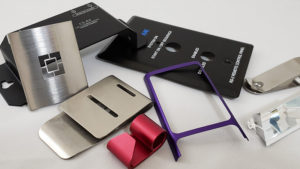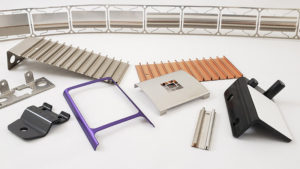Metal Stamping Processes: Getting the Shape You Need With Tanfel
With metal stamping, flat sheet metal is transformed into specific forms or shapes through
techniques such as baking, bending, or punching. It is a complex yet cost-effective way to mass-
produce metal forms. Custom metal stamping is especially useful when you have intricate designs
or shapes since it ensures your components are specifically made to suit your needs.
The Different Metal Stamping Processes
Metal stamping techniques vary across the industry, but Tanfel uses three effective methods:
the deep drawn stamping method, the progressive die stamping method, and the transfer press
stamping method. We create components that end up in products across a range of industries.
From springs and surgical tools in the medical field to gears and metal clips in the automotive
industry, our metal stamping techniques provide many possibilities for small and custom metal
pieces.
Deep Drawn Stamping
Deep drawn stamping is when sheet metal is pulled into the die by way of a punch, and the depth
of the product is larger than its diameter. One advantage of this process is its ability to form
multiple diameters for a piece. It is more cost effective than the traditional turning process and
requires less initial material. Some of the applications this type of stamping is used for include
cookware, car and aerospace parts, and utensils.
Progressive Die Stamping
Progressive die stamping follows an assembly line process; the initial material goes through a
series of steps before reaching its final form. After the strip of material is unrolled into the metal
stamping machine, different stations will form punches and bends to achieve the desired shape.
For pieces with complex geometrical shapes, progressive die stamping is ideal to achieve lower
costs, faster production, and higher repeatability. One common example of this technique is the
lid of a beverage can. This process also produces brackets and clamps along with some firearm
parts.
Transfer Press Stamping
Much like progressive die stamping, this technique involves multiple steps to achieve the finished
product. However, while progressive stamping requires manual management to move the metal
from one station to the next, transfer press stamping is more economical—a mechanical
component is responsible for moving the product through the process. Additionally, transfer press
stamping includes cut-outs, ribs, holes, and threading where progressive die stamping requires a
secondary process.
Secondary Operations
Tanfel prides itself on assisting customers in all aspects of production. To achieve this, we offer
operations in drilling and cutting, EDM cutting, heat treating, welding, and laser cutting. By
providing this range of options in one place, we can accelerate your turnaround time, maintain
our cost-effectiveness for projects, and ensure quality work from start to finish.
Customize Your Product With Our Metal Stamping Techniques


Custom metal stamping is a low-cost, fast solution to acquiring high volumes of stamped metal
pieces. Tanfel has provided precision stamped metal parts and assemblies since 2008 for all
production and prototype needs. We will help with blanking (the process in which a punched out
piece of metal is used in the final product), and piercing (the process in which a punched out
piece of metal is scrapped), as well as bending, turret punch, and laser cutting. From fabricating
metal clamps for hospital tools to brackets and clamps for aerospace engineering, our processes
offer quick, scalable manufacturing for every project.
At Tanfel, we produce five to 600 tons of stamped aluminum, copper, zinc, steel, nickel, and
nickel alloys. Our dedicated professionals will assist with the entire production process from
design to prototype support. If you have any questions or would like to request a quote, contact us today.
Comments are closed